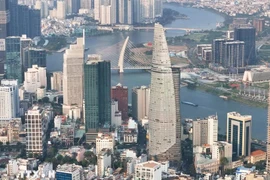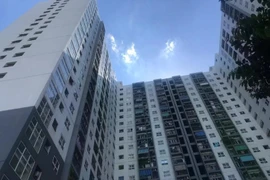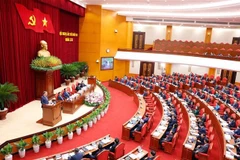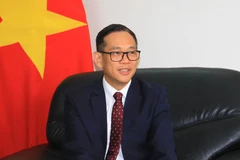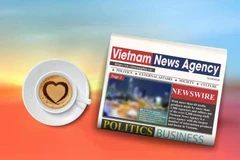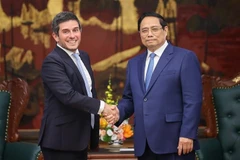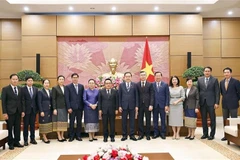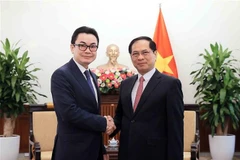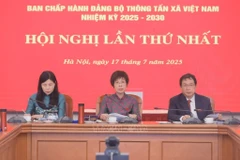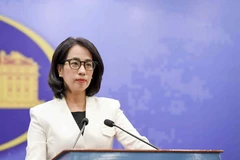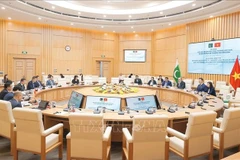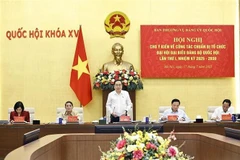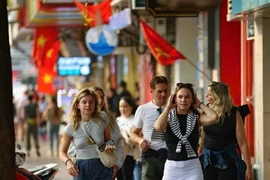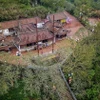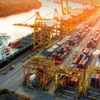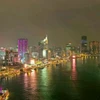HCM City (VNA) - Binh Duong, Ba Ria–Vung Tau and Ho Chi Minh City are racing ahead with the implementation of a major plan to merge them into a single, expanded Ho Chi Minh City, which is designed to capitalise on their geographical proximity, natural advantages, transport infrastructure, and economic strengths to create a unified urban powerhouse.
Beyond the reorganisation of administrative units, it marks a strategic, multi-modal integration of road, rail, air, and sea transport – effectively opening up a new era of development for HCM City and for Vietnam as a whole.
At the first meeting of the Steering Committee for the merger, Nguyen Van Nen, Politburo member and Secretary of the HCM City Party Committee, stated that the merger of the three neighbouring localities represents not just the redrawing of borders, but a bold transformation in governance, strategic thinking, and ambition. The goal is to build HCM City into a modern mega-metropolis that drives Vietnam’s economic progress and elevates its profile on the global stage.
The plan seeks to optimise regional resources, enhance connectivity, and establish a robust supply chain network. The new city is envisioned as an international financial hub and a centre for science, technology, innovation, logistics, and cooperation - comparable to other leading Asian mega-cities. Meanwhile, the cultural identity, history and tradition of the three localities will be woven together, enriching the shared identity of the new city and deepening the reach of the HCM City cultural space.
Commenting on the potential of the new city, Dr Tran Du Lich, Chairman of the city’s Advisory Council for Resolution 98 on piloting some specific mechanisms and policies for the city’s development, said if its potential is fully harnessed, no other city in Southeast Asia will be able to rival it.
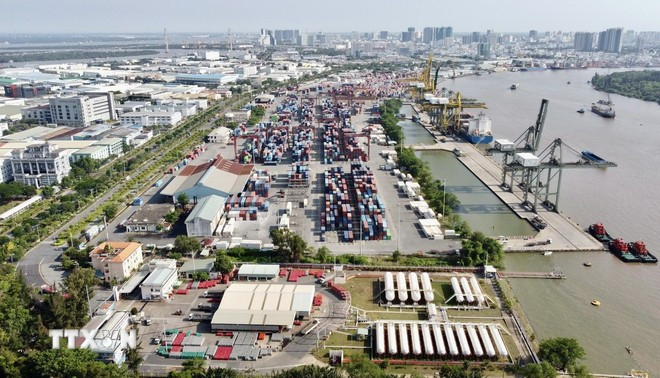
With deep-sea ports, large-scale industrial parks, financial and commercial centres, and vibrant coastal tourism, the new city will unify the existing strengths of the three localities into a single, integrated urban engine, he elaborated.
Lich highlighted that this is not about addition, but multiplication. This is the convergence of favourable factors to develop a true mega-city. He suggested that the new HCM City should not be seen as a provincial administrative unit, but rather as an economic sub-region, which calls for a complete rethinking of economic planning, land allocation and urban zoning.
From an international investment perspective, Thomas Rooney, Associate Director of the Industrial Services at Savills Vietnam, said that these localities are already strong performers in terms of investment attraction. A merger will strengthen collaboration on planning, allowing infrastructure, labour and development strategies to work in synergy. With greater scale comes higher standards of infrastructure and governance, helping the city elevate its position within global value chains, he said.
Rooney also noted that a well-executed merger could facilitate the development of integrated urban-industrial ecosystems, making the region more attractive to foreign investors seeking high-quality, long-term opportunities. With expanded administrative boundaries, there would be more space to develop large-scale industrial parks, providing businesses with more options and reducing the risk of land shortages in high-demand areas.
Speaking at an event in late April, Party General Secretary To Lam affirmed that the new HCM City will act as a growth engine for the Southeast, Southwest, Central Highlands, and South Central regions. However, he emphasised that success depends on the active participation and resource-sharing of surrounding provinces. This is about co-development, mutual elevation, he said. It’s a partnership built on shared strength, with the aim of creating a globally competitive, sustainable, and culturally rich growth hub, he added.
To realise this vision, HCM City, Binh Duong, and Ba Ria–Vung Tau are intensifying efforts to implement the Politburo's Resolution No. 57-NQ/TW, which outlines breakthroughs in science, technology, innovation, and national digital transformation. The three regions are working to upgrade digital infrastructure, improve the efficiency of government systems, and ensure seamless coordination post-merger. This includes digitising records, enabling remote work models, and connecting data across newly merged administrative units to ensure continuity for both residents and businesses.
Economists see this merger as a model for the future of Vietnamese urban development. It aligns closely with national strategies focused on the digital economy, green economy, and circular economic models. More than an administrative shift, this is a foundational step towards launching Vietnam into a new era./.

